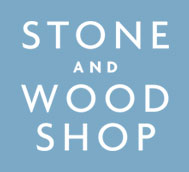Stone flooring follies
A love of plywood.
Plywood is of course fantastic stuff – strong, easy to cut and relatively cost effective but when it comes to tiled floors and stone flooring in particular it can cause trouble.
Where a suspended floor is present and a tiled finish is required, British Standards requires two layers of 9 mm ply fixed independently and with the joints staggered. Furthermore, the front, back and all edges should be sealed and a couple of millimetres gap provided between each sheet.
These requirements, which if carried out to the letter will tend to offer a fairly secure background on which to tile also give a clue to the limitations of plywood for stone floors in the first place. The sealing of the faces and edges is to prevent the plywood from taking on moisture from the atmosphere which will cause it to expand and the requirement for two layers with staggered joints is to minimise the subsequent movement in the ply sheets as a result of this expansion or indeed shrinkage for example where under floor heating is installed.
In reality two sheets of 9 mm ply usually turns into one sheet of 12mm and I don’t remember the last time I saw any builders sealing their plywood before fixing.
Combine with this the widespread use of electric under floor heating and the lack of a clear standard for plywood never mind the range of temperatures and humidity levels the plywood is stored in and you have a recipe for trouble.
To put it bluntly – if the plywood shrinks, chances are it will crack your stone floor. Same thing if it expands. Flexible adhesives will not cope with this degree of movement and the resulting damage can ruin a floor. I have seen this happen dozens of times over the years. Stone floors with multiple cracks which themselves are often 1220 mm apart… you guessed it…1220mm is the width width of a sheet of ply!
For a secure stone flooring installation you need a stable subfloor in terms of minimum deflection ( up and down movement ) and also lateral movement, Either can cause damage to your stone tiles. Plywood is great for increasing rigidity when fixed over floorboards or when used in 18 mm thickness to create a subfloor in the first place but as we have discussed it has limited dimensional stability.
My recommendation is to install an uncoupling matting on top of the plywood before laying your stone floor, for example Schluter Ditra matting. This product is fantastic and can cope with the sort of movement described above. In fact that is exactly what it is designed for. The product is widely available – we sell it on this website ( LINK TO ANCILLARIES PAGE ), you can check out the technical details at ( http://www.schluter.co.uk/produkt.aspx?doc=6-1-ditra.xml&pg=funktion. ( PROVIDE LINK ‘ DITRA MATTING ‘ ) and see how to install this product on YouTube. http://www.youtube.com/watch?v=f6FyWs2WZ1k PROVIDE LINK.




